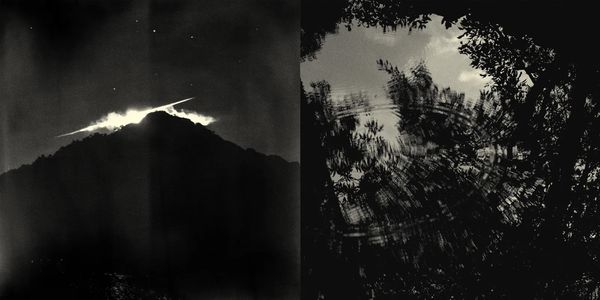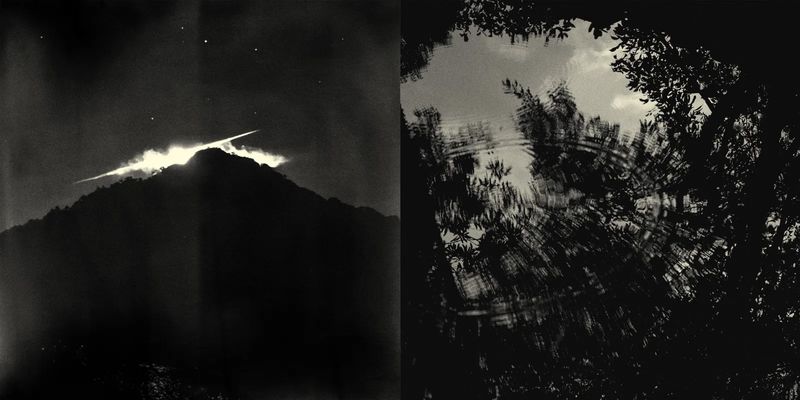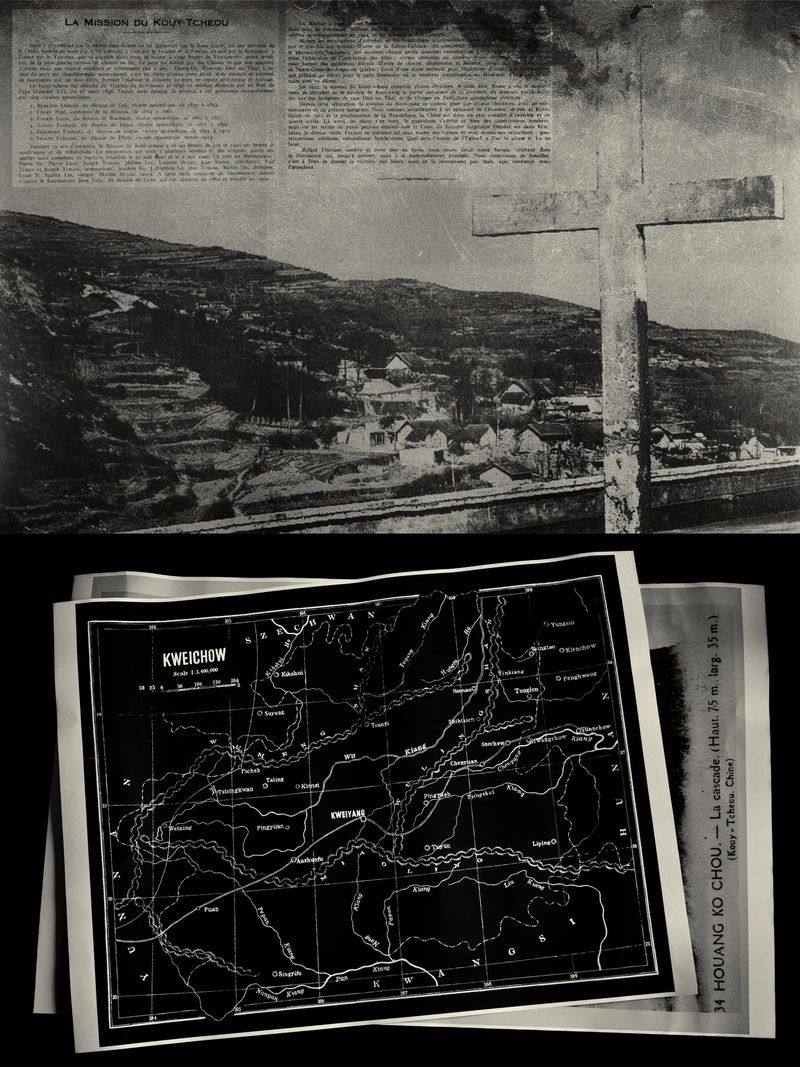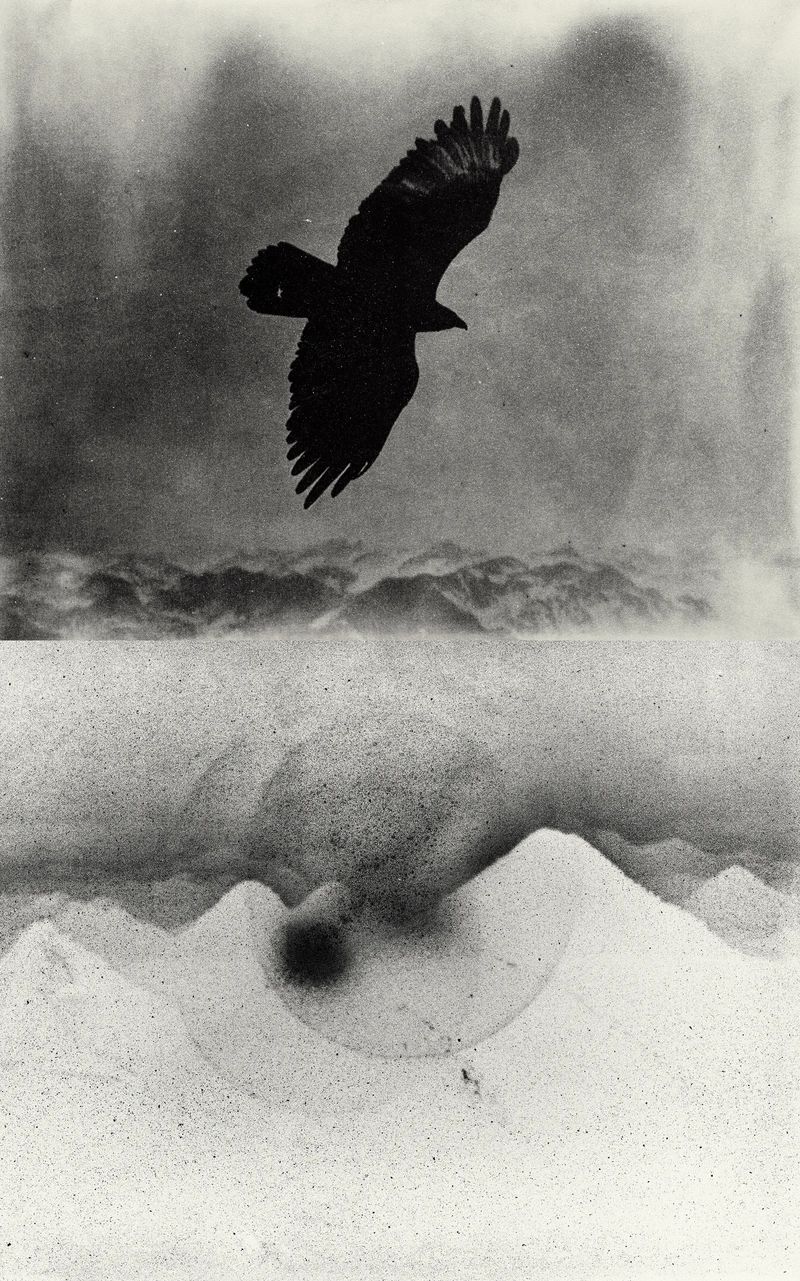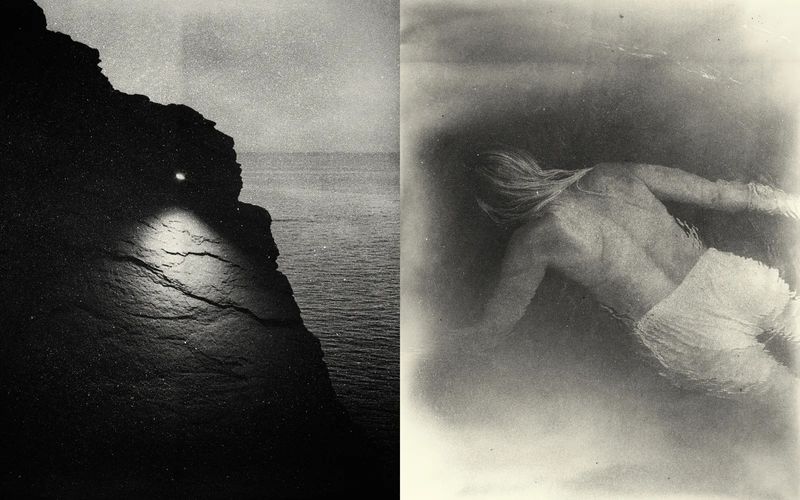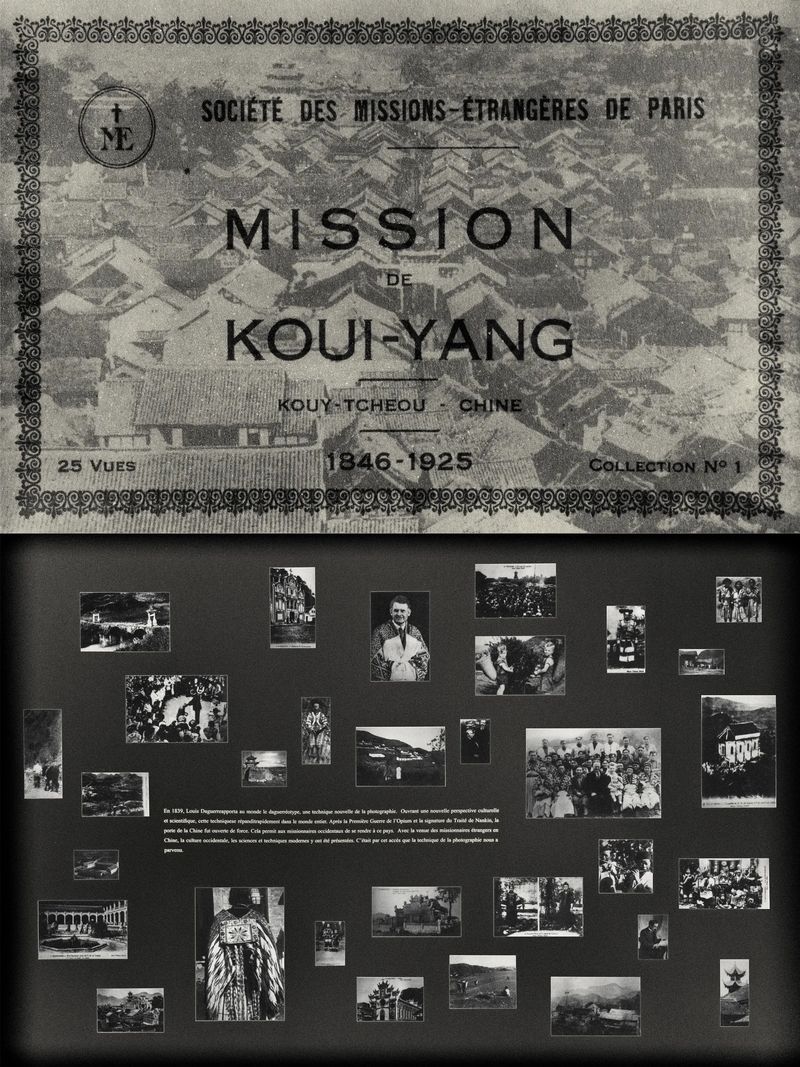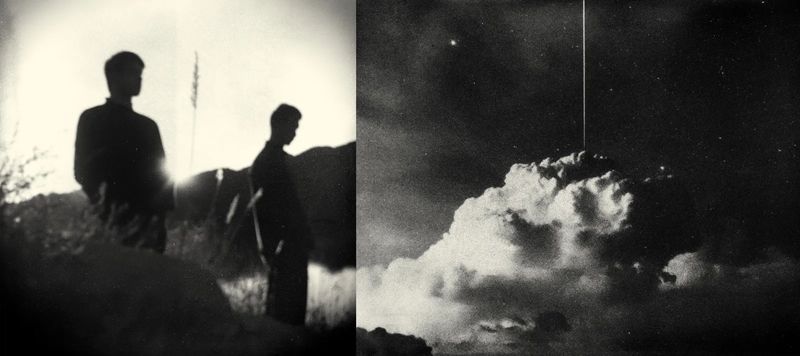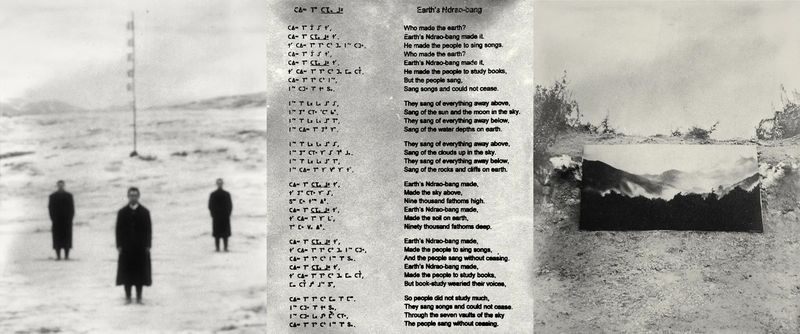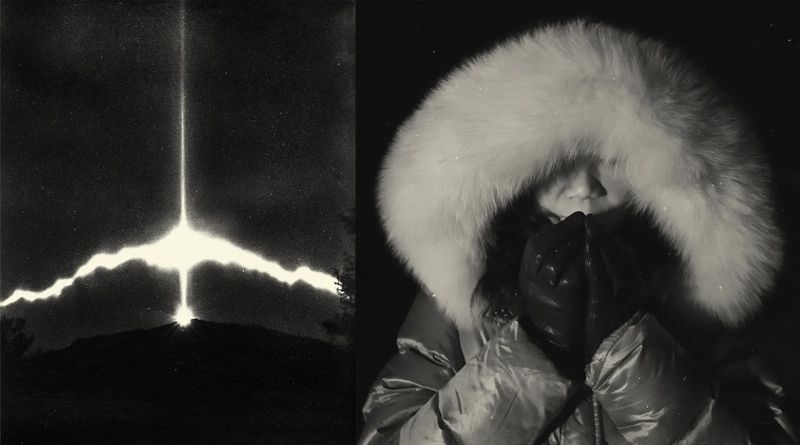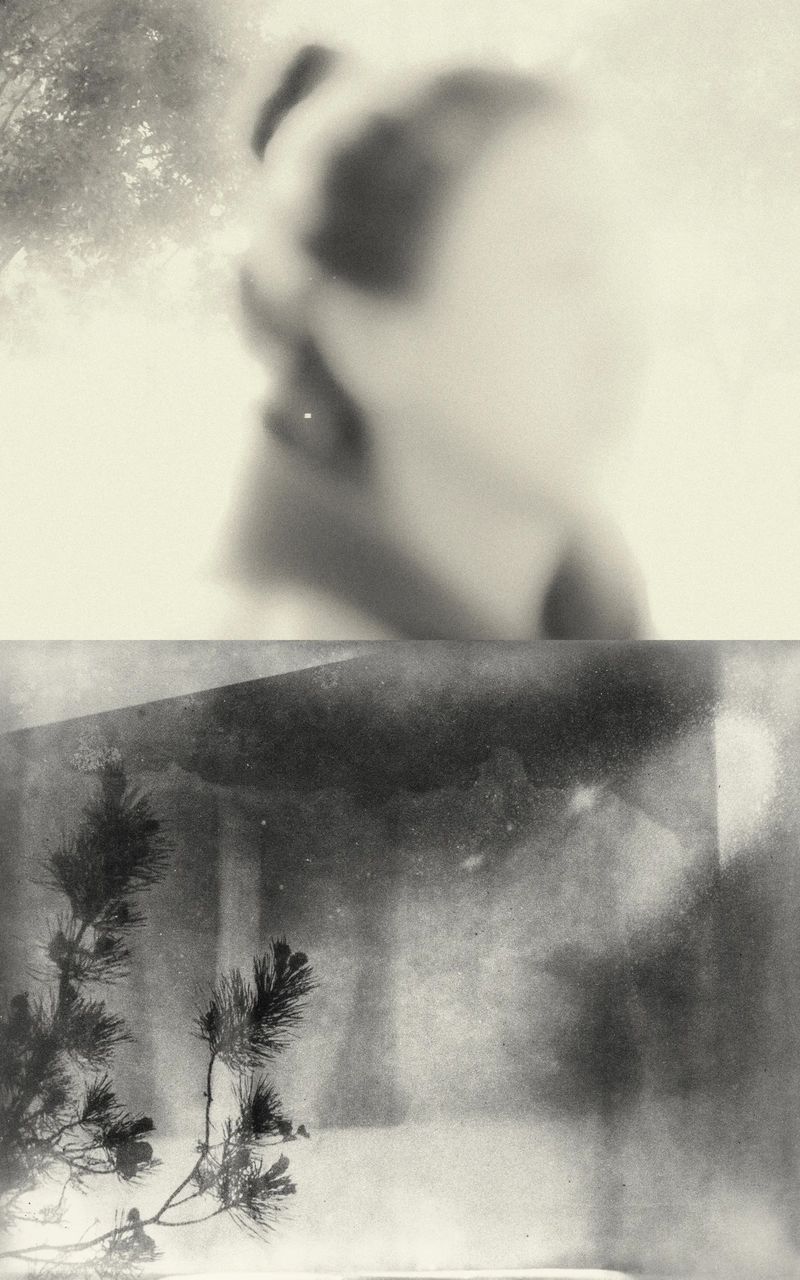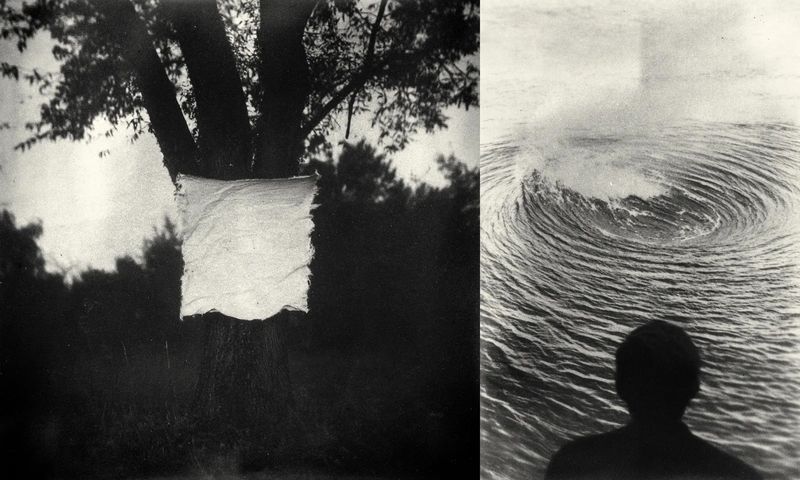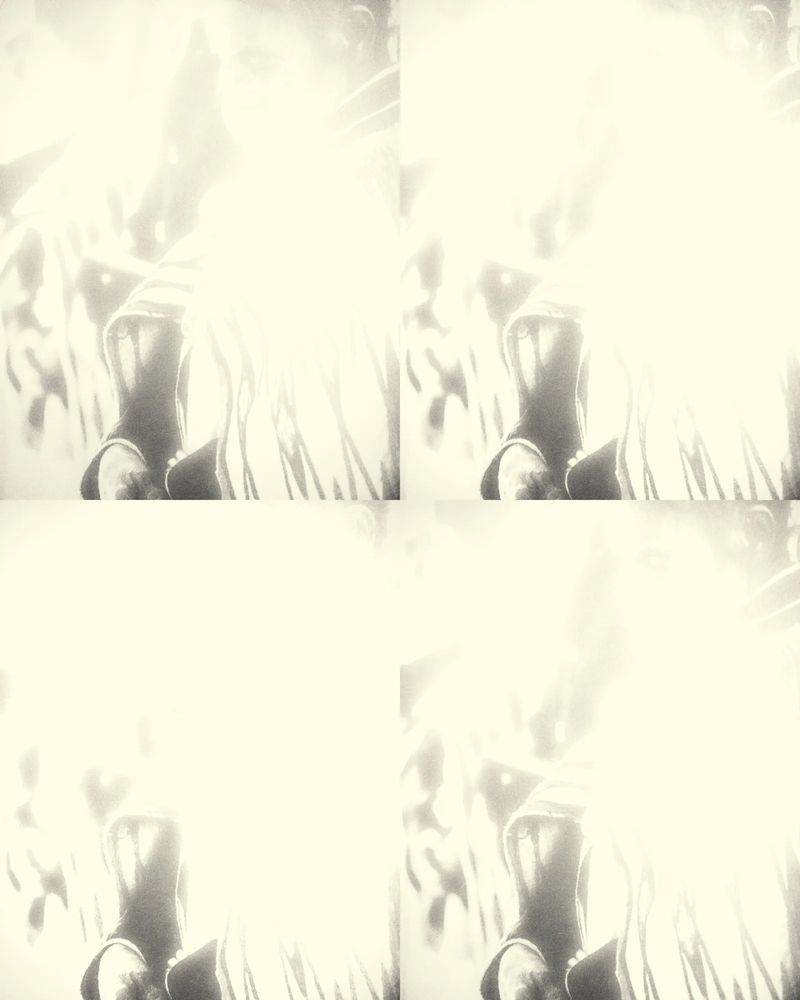Zekun Wang Transforming Memory And Imagination
-
Published11 Sep 2025
-
Author
- Topics Archive, Awards, Contemporary Issues, Fine Art
Through field photography, rephotographed archives, and AI generated images, Wang’s vision creates a hybrid space that mirrors Shimenkan’s history of cultural collisions — a metaphorical landscape where magical realism and lived history converge.
Shimenkan, a remote mountain enclave in Guizhou province, was once a vibrant cultural center of Southwest China—where indigenous Miao customs blended with Christian missionary traditions, fostering distinctive rituals and transforming local identity, before falling into decline.
Its layered history first reached photographer Zekun Wang through a friend and fellow photographer who had long studied the region, and what began as shared stories quickly unfolded into a fascination of his own. With Before Falling Into The Deep Valley, Wang traces a photographic journey that drifts between fiction and historical research, transforming Shimenkan into a metaphorical landscape—at once archive and dreamscape—where culture, faith, and time fold into one another.
"What fascinated me most was its intense cultural collisions," Wang says. "Imagine—how did the Christian culture and foreign objects brought by Western missionaries collide and blend with local Miao culture? This is utterly unique."
He recalls scenes of "Miao-dressed congregants praying in churches"—images suspended between the familiar and the surreal, moments that carry the texture of magical realism, except here it was not fiction at all but reality itself.
Yet the project reaches beyond Shimenkan’s story. The photographer sees it as a prism through which to reflect on the present. With a contemporary visual language and an acute sensitivity to media, Before Falling Into The Deep Valley becomes, in his words, a meditation on the dialogue between human culture and artificial intelligence. To give form to such layered themes, Wang turns to mixed media—blurring the line between what was, what is, and what might come.
Moreover, he brings this same multilayered complexity that defines Shimenkan’s history and symbolism into his photographic practice. His approach unfolds in stages, each one documenting and transforming reality, creating a passage through photography as a medium. The stages intertwine: He conducted an extensive review of historical material, then turned to field photography. He gathered and rephotographed historical sources: century-old photographs of the town, maps preserved in foreign libraries, missionary records, vintage postcards.
Building on this groundwork, Wang turned to A.I. tools to generate a new body of work. Through written prompts, imagined scenarios, and the reinvention of historical photographs fed back into the system, he produced visuals that layered the real with the fictional.
Therefore, the mystical and the magical resurface again and again in Wang’s photographs. A flash of light slices through the soft edges of a cloud, veiling the sun’s outline as it sketches the silhouette of a mountain—a dark ridge etched against a star-pricked gray sky. On the water’s surface, reflections gather: branches, sky, a rippling half-moon of waves—the same mirrored forms reappearing in the close-up of a soft eye, turned elsewhere. Circles enclose mountains and clouds, white and vaporous now, like the profiles of faces caught mid-speech rather than mid-gaze. Points of light scatter across a cliffside stone, bodies drift in suspension, and the enchantment returns—insistent, eternal.
The results defy simple categorization: "Some are real-scene photographs, some A.I. fabrications, some hybrids," Wang says. What emerges is a hybrid form, poised between the sharp precision of the digital and the coarse imprint of the human hand. "This constitutes what I call the 'buffer zone' between humans and machines," Wang explains—a space where creative intuition and technological vision meet.
For Wang, this fragmented quality is not a flaw but a strength. This "imperfect symbiotic state" mirrors Shimenkan itself: a place historically shaped by collisions between cultures, beliefs, and peoples. Much like today’s evolving relationship between humans and artificial intelligence, it becomes a kind of testing ground—a tangled space of mutual entanglement where new forms of life and meaning can grow.
Though diverse in form, the works remain firmly connected to reality. For Wang, photography is never just about presenting objective truth; it is about interpreting human behavior and existence in ways that influence how we see, what we believe, and the values we hold.
Ultimately, Wang conceives of Before Falling Into The Deep Valley as an "image-poem," written in the language of magical realism. It shifts between Shimenkan’s layered history and its singular culture, while also expanding outward into a meditation on humanity’s entanglement with technology. The work does not claim resolution; instead, it dwells in ambiguity, where past and future, memory and invention, image and imagination continually brush and reconfigure one another. This unfinished space might very well be where meaning—and wonder—take root and begin.
--------------
All photos © Zekun Wang, from the series Before Falling Into The Deep Valley
